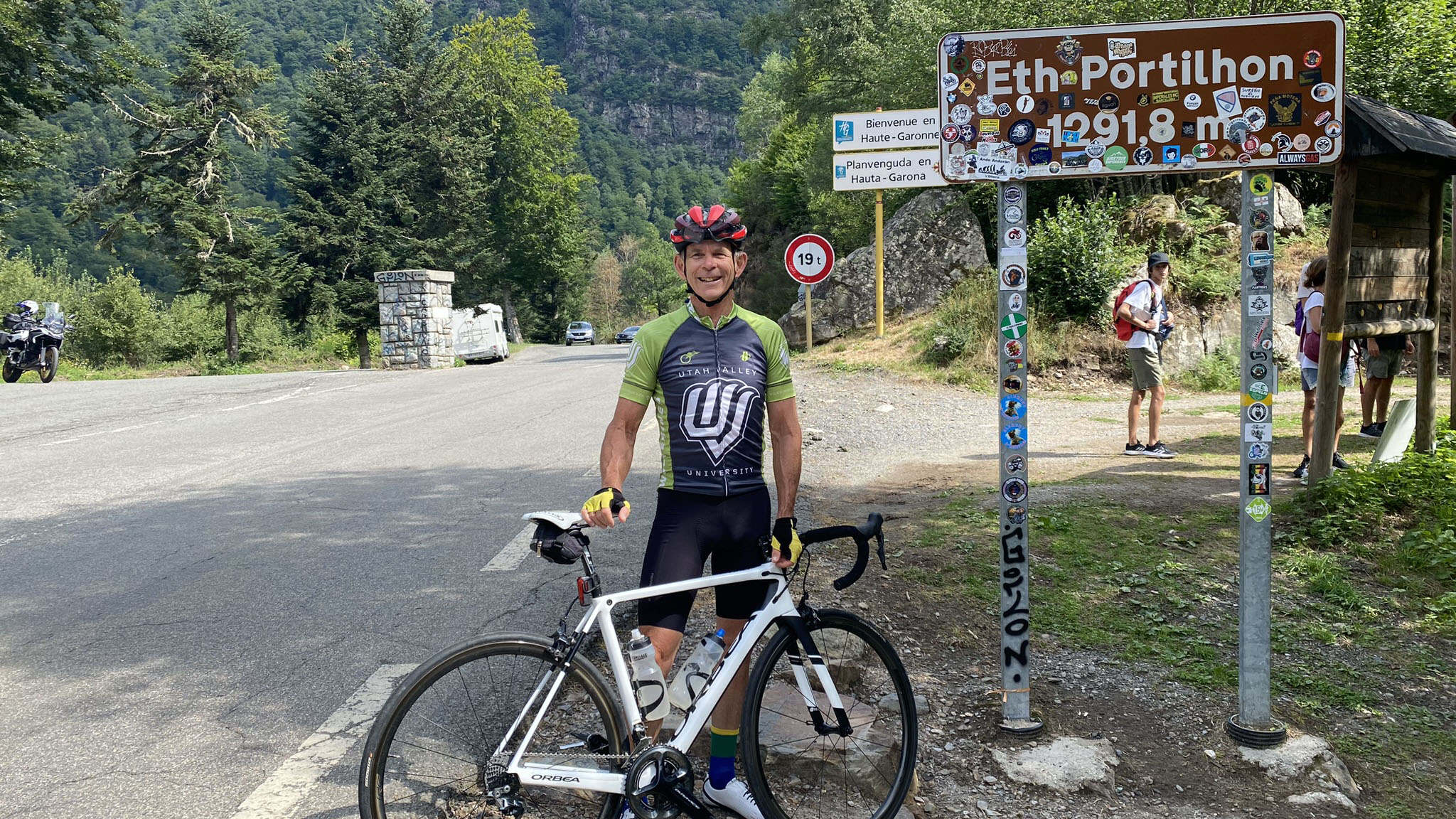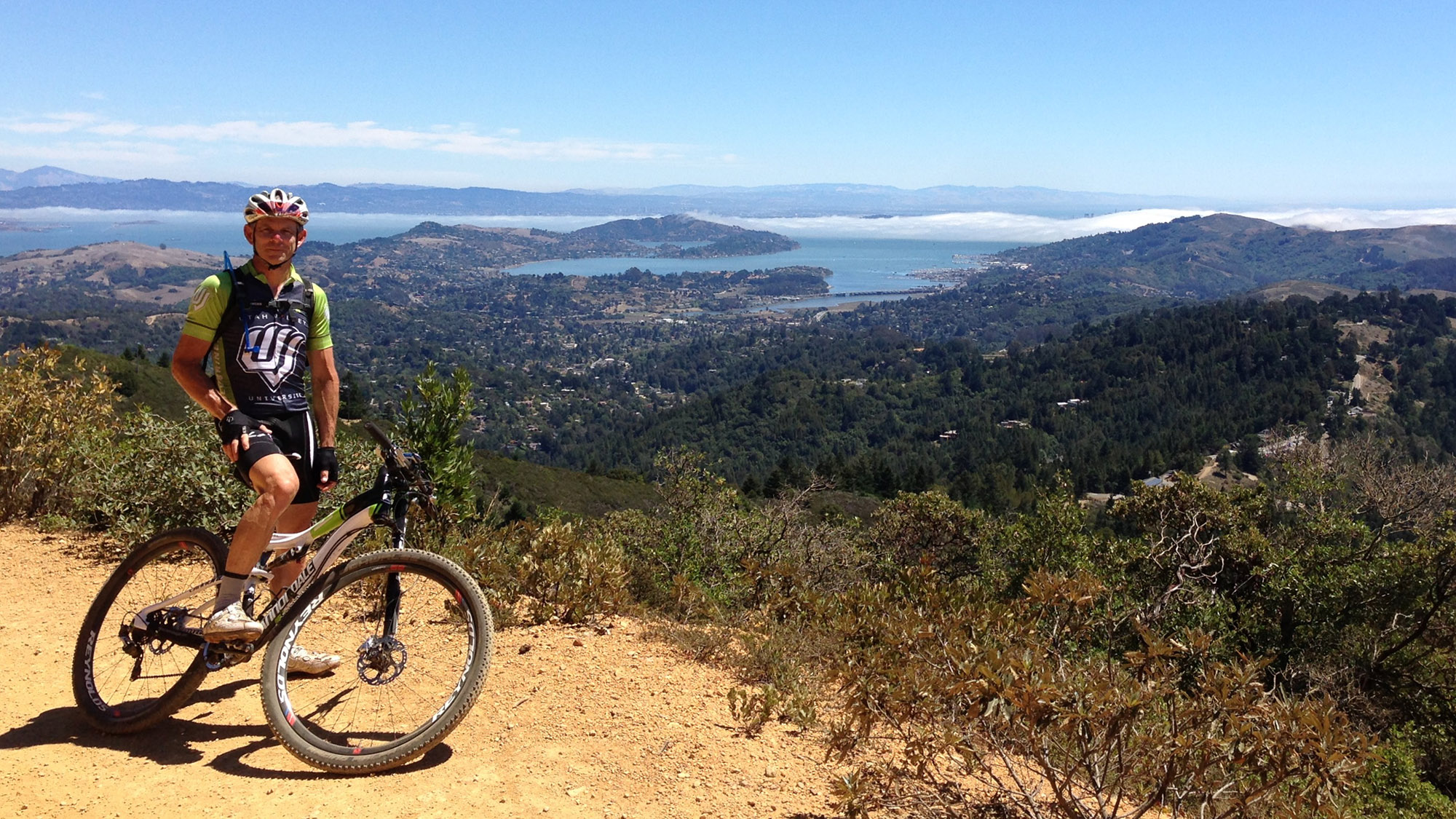UVU geology professor Michael Bunds contributed to this year's Geo Tour de France, a series of daily articles published during the Tour de France analyzing the landscape and geological history of the terrain the racers traverse.


The Tour de France is one of the most beautiful, fascinating spectacles in all of sport, highlighting both the motion of the hundreds of cyclists in peak physical condition and the stunning landscapes of France.
Dr. Michael Bunds, professor of geology at Utah Valley University, has been an avid cyclist for decades, giving him a unique perspective on the world’s most famous cycling race. This year, he was asked to contribute to the Geo Tour de France, a series of daily articles published during the race analyzing the landscape and geological history of the terrain the racers traverse.
“I’ve had this lifelong passion for cycling,” Bunds said. "The ability to bring the passion for geoscience and education together with the sporting thing is pretty fun.”
The Geo Tour de France is led by faculty at Utrecht University in the Netherlands. Along with the daily articles, the project produces commentaries and lectures that air on television in the Netherlands and the United Kingdom.
Bunds’ article covers Stage 19 of the race, which includes the highest point in the race elevation-wise: a mountain in the French Alps known as the Cime de la Bonette. He also discusses the challenge of measuring elevation, or the distance above sea level, of a point that sits entirely above solid ground. Factors such as the earth’s rotation, distance from the equator, and the density of the material below the surface can affect how its elevation is calculated.
Bunds said the Tour de France is unique among sporting events because it is “both a showcase of and enabled by the geography and the geology of the location.” He said the landscape of the Alps is notable for the relative difference between the high points of the mountain peaks and the depths of the nearby valleys, as well as the variety of geological material found there.
“Through much of the Alps and the Pyrenees, you see rocks that were originally formed in the bottom of the ocean at the top of the mountains,” Bunds said. “That's an illustration of how dynamic the earth is.”
Bunds said he loves teaching and living in Utah because of its own geographical and geological variety. He enjoys cycling in the various mountains and canyons across the Wasatch Front, including Little and Big Cottonwood Canyons and Millcreek Canyon. But he’s also traveled to Europe and ridden some of the famous climbs included in the Tour de France, as well as other notable locales.
“Cycling lets me see the world,” Bunds said. “The physical fitness, the challenges — you’re challenged to be the best at it you can. I like the speed and going downhill fast. And it’s almost got this spiritual aspect to it for me. To have gone to some of these really famous climbs in Europe that they've used now for 120, 125 years … to have gone and ridden those is like a pilgrimage.”
To read Bunds’ article and to see more from the Geo Tour de France project, visit geo-sports.org.